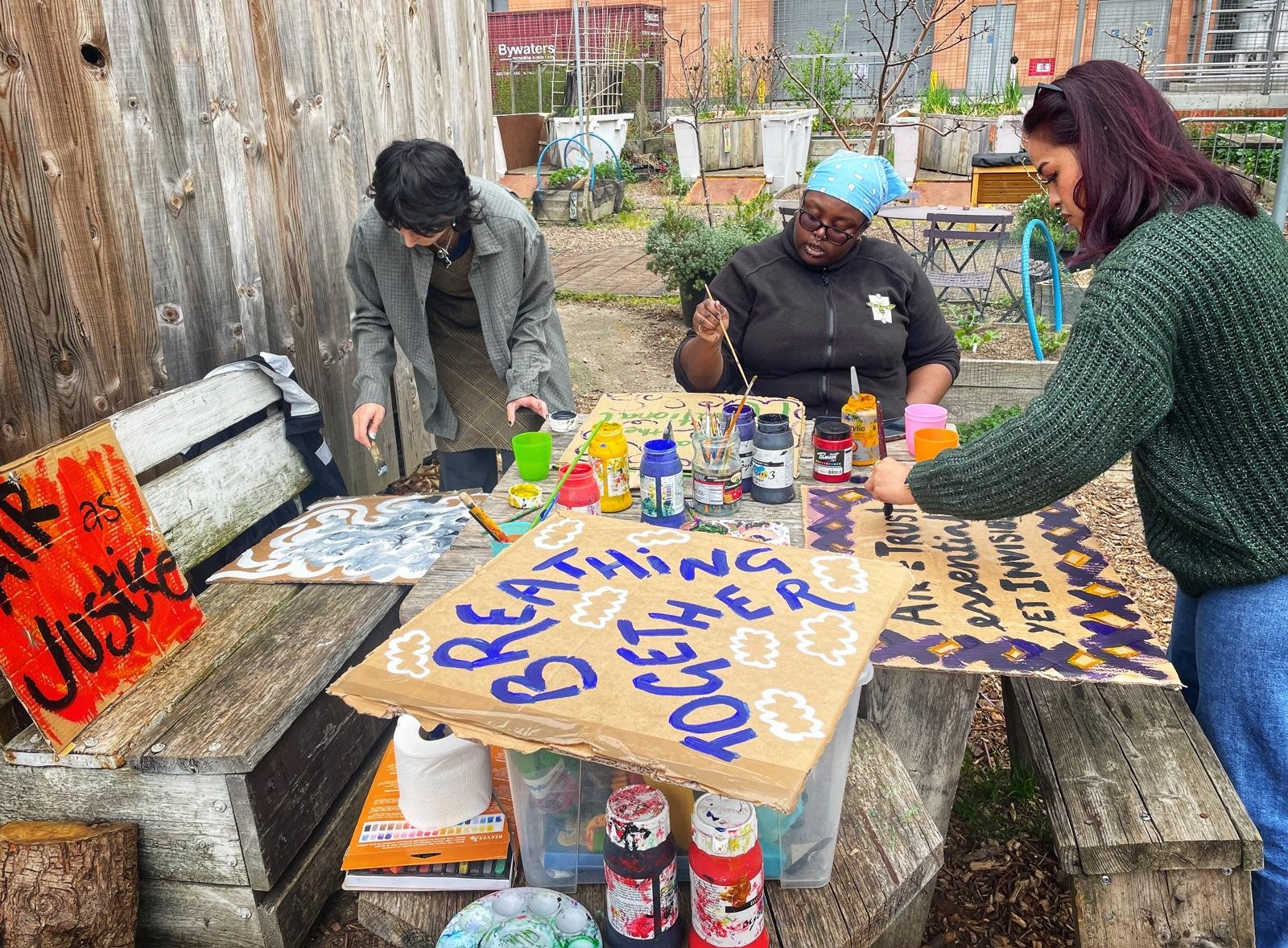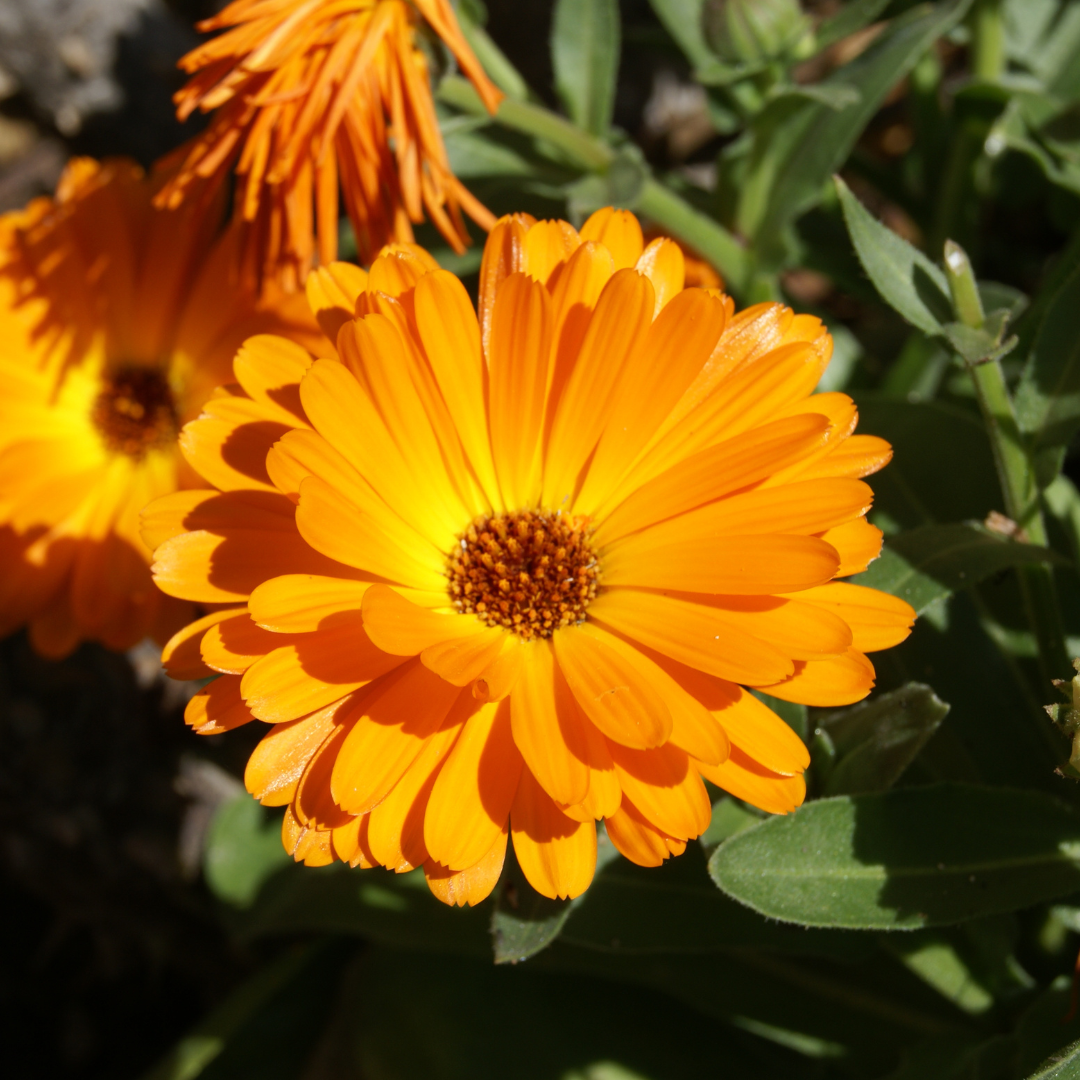Composting Season
It’s those cold days in February, where Imbolc has passed with its promises of the upcoming Spring and it’s still just about light when you get home from work but your thermals are still very much in circulation. It’s like when you wait for someone to pass you in a doorway but they also wait and you both go but then jolt to a stop. It’s here but it’s not, not just yet.
The flirtation of a warmer afternoon with clear, crisp air, rigid stands of daffodil shoots give me the buzz of what’s to come.
This time of year invites reflection. It’s composting season; a time where you cut back the old growth from last year, you remember the successes and the challenges of the season whilst you chop, mix and turn, letting those learnings break down and transform into energy for the Spring ahead.
Autumn and Winter held our education theme of Dirty Little Rotters, an investigation into the fungi, plants, bacteria and creatures that are involved in the transformation process of rot, decay and fermentation. We took an arts-focussed approach, centered around a procession and sculpture made from compostable materials. The sculpture was fun to make with the visiting school groups. We used cardboard, paper tape and natural pigments such as oak gall ink, logwood and charcoal paint using char from our fires and cooking oil. We made individual, woodlouse-ish forms decorating them with shapes and patterns from microscopic fungi and bacteria as well as the surfaces of the creatures that work alongside them. When arranged on bamboo poles, these individuals made one long creature, something resembling a centipede.
The sculpture worked alongside a number of other approaches to the investigation, including an exhibition of naturally dyed cloth, a soundscape and a Victorian-era cinema made from a roll of paper and backlit to illuminate the illustrations that followed our narrated story, ‘a crankie’ if you’re interested in finding out more.
We worked with an artist and ecologist, Dee Sharma, who helped us create a soundscape of the earth. With the children, we learned about bioacoustics and their use in ecological monitoring. The children created a library of sounds: manipulating mud, rubbing sticks together, sliding their hand along loose gravel, which were used by Dee to make a sonata for the soil, a snail symphony. This track was played in sound helmets, isolating you from the ambient noise.
Sound like quite a lot? That’s because it was. An over-excited approach from enthusiastic educators? Definitely. And as I metaphorically mix the school workshops and exhibition event into the compost heap (stay with me) I consider the year ahead. What do I want to feed? What am I leaving behind? What have I learnt?
A 2024 poll of 2000 nationally representative parents found that 74% of children aged between 5 and 12 years old spend less than 1 hour outside each day. The much-publicised kicker of these findings being that inmates of UK prisons legally get 1 hour allotted to them each day outside. I have certainly found this to be the case in my work with children and young people, finding that outdoor literacy to be startlingly low. This goes hand-in-hand with a fear of getting dirty, an anxiety around the intentions of passing wildlife and a limited toolbox of games and imaginary worlds that the woods lends itself so beautifully to.
I was honored to be there for the first time many of the children and young people had ever held a worm. Their hand rigid and quivering, wrist clamped in the tight grip of their other hand. Their instinct to scream and holler subdued by their respect for the worm, muted to a laboured intake of breath. One of my highlights was introducing a young person, 15 years old, to a woodlouse. His wonder and disbelief that such a creature could exist in parallel with his own daily life was energising, I could see his fear dissolve while countless questions blossomed.
This is the real achievement of the whole season of activities. The bones that hold up our whole body of work. It’s in the soil-covered hands that weren’t immediately washed, the cold cheeks and the silvery slime trails left on the cuffs of coats. That’s where the lasting memories are formed and attitudes altered, attitudes that are then taken into the rest of their lives.
As I tear up the patterned legs of the cardboard sculpture I layer them onto the pile of leaves, branches and straw, gradually losing their defining boundaries, becoming ashy grey with a dusting of fungus. Our deep dive into the realm of rot had introduced hundreds of local children to this magical microscopic world but it was the time in between the workshop sessions that will remain most memorable for me; the margins, the gaps, the bits between the paving slabs. These are the unplanned spaces where children can search for worms, meet woodlice, push sticks into the earth and feel the cool mud between their fingers. The place where they can become their own dirty little rotter.




It’s those cold days in February, where Imbolc has passed with its promises of the upcoming Spring and it’s still just about light when you get home from work but your thermals are still very much in circulation. It’s like when you wait for someone to pass you in a doorway but they also wait and you both go but then jolt to a stop. It’s here but it’s not, not just yet.